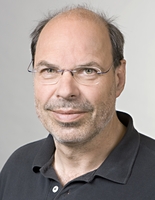Prof. Dr. Stephan Paul

- Telefon
- +49 89 289-12571
- Raum
- 263
- stephan.paul@tum.de
- Links
-
Homepage
Visitenkarte in TUMonline
- Arbeitsgruppe
- Hadronenstruktur und Fundamentale Symmetrien
- Funktion
- Professur für Hadronenstruktur und Fundamentale Symmetrien
Lehrveranstaltungen und Termine
| Titel und Modulzuordnung | |||
|---|---|---|---|
| Art | SWS | Dozent(en) | Termine |
|
Kern-, Teilchen- und Astrophysik für Lehramt eLearning-Kurs Zuordnung zu Modulen: |
|||
| VO | 4 | Paul, S. |
Di, 10:00–12:00, PH II 127 Mi, 09:30–12:00, PH 3268 sowie einzelne oder verschobene Termine |
|
Happy Hour der Kern- und Teilchenphysik eLearning-Kurs LV-Unterlagen Zuordnung zu Modulen: |
|||
| PS | 2 |
Paul, S.
Mitwirkende: Greenwald, D. |
Di, 16:00–18:00, PH 3268 |
|
Introduction to C++ programming
eLearning-Kurs Zuordnung zu Modulen: |
|||
| UE | 2 |
Paul, S.
Mitwirkende: Gerassimov, S. |
Mo, 10:00–17:00, PH II 127 |
|
Übung zu Kern-, Teilchen- und Astrophysik für Lehramt eLearning-Kurs Zuordnung zu Modulen: |
|||
| UE | 2 |
Leitung/Koordination: Paul, S. |
Termine in Gruppen |
|
Repetitorium zu Happy Hour der Kern- und Teilchenphysik Zuordnung zu Modulen: |
|||
| RE | 2 |
Leitung/Koordination: Paul, S. |
|
|
Seminar zu aktuellen Forschungsthemen in der Teilchenphysik (für Mitarbeiter und Studenten) LV-Unterlagen Zuordnung zu Modulen: |
|||
| SE | 2 | Märkisch, B. Paul, S. |
Do, 09:30–11:00, PH 3268 |